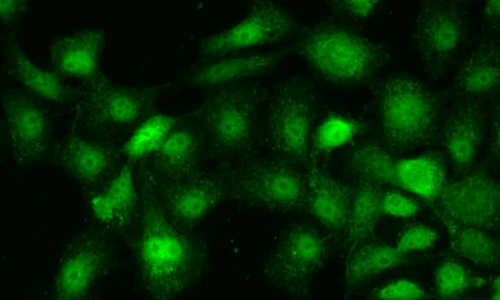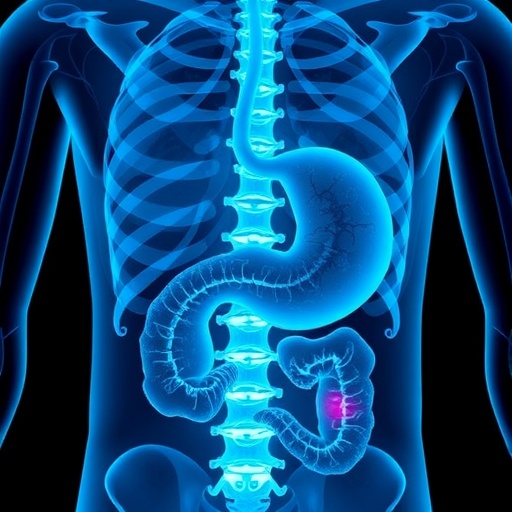A new study led by University of Toronto researcher Dr. David Lam has discovered the trigger behind the most severe forms of cancer pain. Released in top journal Pain this month, the study points to TMPRSS2 as the culprit: a gene that is also responsible for some of the most aggressive forms of androgen-fuelled cancers.
This is an image of TMPRSS2. Photo Credit: D. Lam
Head of Oral and Maxillofacial Surgery at the Faculty of Dentistry, Lam’s research initially focused on cancers of the head and neck, which affect more than 550,000 people worldwide each year. Studies have shown that these types of cancers are the most painful, with sufferers experiencing pain that is immediate and localized, while pain treatment options are limited to opioid-family pharmaceuticals such as morphine.
It was while conducting clinical research at the University of California San Francisco, though, that Lam noticed something interesting. A majority of head and neck cancer patients are men – leading him to investigate a genetic marker with a known correlation to prostate cancer, TMPRSS2.
“Prostate cancer research already knows that if you have the TMPRSS2 gene marker, the prostate cancer is much more aggressive. They’ve also shown that this is androgen (male hormone) sensitive.”
In his study, Lam, who is jointly appointed as a Consultant Surgeon at the Princess Margaret Cancer Centre and a Clinician at the Mount Sinai Wasser Pain Management Centre, ascertained that TMPRSS2 was not only present in patients suffering from head and neck cancers – it was also prevalent in much greater quantities than in prostate cancer.
But was there a link to pain?
Visible on the surface of the cancer cells, TMPRSS2 comes into contact with the body’s nerve pain receptors, which then triggers the pain. Lam was also able to determine a clear, correlative relationship between the two: the more TMPRSS2 that comes into contact with nerve pain receptors, the greater pain is provoked.
Lam and his fellow researchers followed up this observation by looking at different types of cancers with known pain associations – for instance, certain breast and melanoma cell lines. These cells were grown and labelled for the TMPRSS2 genetic marker.
According to clinical data, head and neck cancer is the most painful form of cancer, followed by prostate cancer, while melanoma, or skin cancer, sits at the bottom of the pain scale.
But what surprised the researchers was that the presence and amount of TMPRSS2 in these cancer cell cultures stood in exact correlation with the known level of pain each cancer causes.
“It was exactly what we know clinically about pain association,” adds Lam.
A New Direction for Drug Research
The startling discovery of TMPRSS2’s role in triggering cancer pain may lead to the creation of targeted cancer pain therapies that effectively shut down the expression of this gene or its ability to infiltrate pain receptors in the body.
Dr. Brian Schmidt, Professor at New York University College of Dentistry, Director of the Bluestone Center for Clinical Research and a co-author of the study states, “The discovery that TMPRSS2 drives cancer pain demonstrates another way that cancers lead to suffering. Inhibition of its activity in patients might provide a new form of treatment for cancer pain.”
“Any cancer that is painful before initiating drug treatment – we can label the cancer cells for TMPRSS2 and look for this particular marker,” explains Lam, who adds that the most effective approach to ending pain would be to target the production and expression of the pain gene.
But there may be other ramifications to the TMPRSS2 study: further research may yet uncover what role the increased expression of TMPRSS2 plays in the aggressiveness and morbidity rates associated with certain aggressive cancers – and whether or not shutting down the pain gene will have any other beneficial side effects than reducing discomfort.
The study also involved researchers from New York University and the Forsyth Institute (Cambridge).
Story Source:
The above story is based on materials provided by University of Toronto Faculty of Dentistry.





